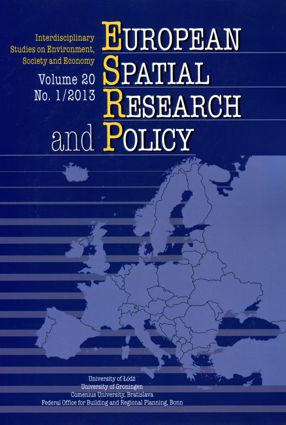Polish Interstate Relations with Ukraine, Belarus and Lithuania After 1990 in the Context of the Situation of National Minorities
DOI:
https://doi.org/10.2478/esrp-2013-0001Keywords:
national minorities, interstate relations, political transformation, Poland, Ukraine, Belarus, LithuaniaAbstract
When we compare the contemporary ethnic structure and national policy of Poland and its eastern neighbours, we can see clear asymmetry in both quantitative and legal-institutional aspects. There is currently a markedly smaller population of Ukrainians, Belarusians and Lithuanians living in Poland than the Polish population in the territories of our eastern neighbours. At the same time, the national minorities in Poland enjoy wider rights and better conditions to operate than Poles living in Ukraine, Belarus and Lithuania.
Additional complicating factor in bilateral relations between national minority and the home state is different political status of Lithuania, Belarus and Ukraine and different processes of transformation the consequence of which is differentiated state of political relations of Poland with its eastern neighbours. Lithuania, like Poland, is a member of EU, Ukraine, outside the structures of European integration, pursued a variable foreign policy, depending on the ruling options and the economic situation, and Belarus, because of internal policy which is unacceptable in the EU countries, is located on the political periphery of Europe.
Downloads
References
BABIŃSKI, G. (1997), Pogranicze polsko-ukraińskie. Etniczność, zróżnicowanie religijne, tożsamość, Kraków: Nomos.
Google Scholar
BAŃSKI, J. (2008), ‘Polska i Europa Środkowo-Wschodnia w koncepcjach podziału Europy’, [in:] Eberhardt , P. (ed.), Problematyka geopolityczna ziem polskich, Warszawa: Prace Geograficzne, 218, pp. 121–134.
Google Scholar
BARWIŃSKI, M. (2009), ‘The Contemporary Polish-Ukrainian Borderland - Its Political and National Aspect’, [in:] Sobczyński , M. (ed.), Historical Regions Divided by the Borders. General Problems and Regional Issue, Łódź–Opole: Region and Regionalism, 9 (1), pp. 187–208.
Google Scholar
BIEŃKOWSKA-PTASZNIK, M. (2007), Polacy – Litwini – Białorusini. Przemiany stosunków etnicznych na północno-wschodnim pograniczu Polski, Białystok: Uniwersytet Białostocki.
Google Scholar
BUDYTA-BUDZYŃSKA, M. (2010), Socjologia narodu i konfliktów etnicznych, Warszawa: WN PWN.
Google Scholar
EBERHARDT, P. (1993), Polska granica wschodnia 1939-1945, Warszawa: Editons Spotkania.
Google Scholar
EBERHARDT, P. (2004), ‘Koncepcja granicy między cywilizacją zachodniego chrześcijaństwa a bizantyjską na kontynencie europejskim’, Przegląd Geograficzny, 76, pp. 169–188.
Google Scholar
HUNTINGTON, S. P. (1997), Zderzenie cywilizacji i nowy kształt ładu światowego, Warszawa: Muza.
Google Scholar
KĘPKA, P. (2009), Postawy polityczne ludności prawosławnej w województwie podlaskim, master’s thesis wrote in Department of Political Geography, University of Łódź, promoter M. Barwiński, Łódź.
Google Scholar
KOWALSKI, M. (1999), ‘Kulturowe uwarunkowania stosunków polsko-litewsko-białoruskich’, [in:] Kitowski , J. (ed.), Problematyka geopolityczna Europy Środkowej i Wschodniej, Rzeszów: Filia UMCS, pp. 77–88.
Google Scholar
KOWALSKI, M. (2008), ‘Wileńszczyzna jako problem geopolityczny w XX wieku’, [in:] Eberhardt , P. (ed.), Problematyka geopolityczna ziem polskich, Warszawa: PTG, IGiPZ PAN, pp. 267–298.
Google Scholar
KURCZ, Z. (2005), Mniejszość polska na Wileńszczyźnie, Wrocław: Wydawnictwo Uniwersytetu Wrocławskiego.
Google Scholar
LIS, A. (2008), Pogranicze polsko-ukraińskie jako pogranicze narodowościowo-wyznaniowe, master’s thesis wrote in Department of Political Geography, University of Łódź, promoter M. Barwiński, Łódź.
Google Scholar
NIJAKOWSKI, L. (2000), ‘“Pomosty” i “zasieki”, czyli o drogach pojednania. Mniejszości narodowe i etniczne a polska polityka wschodnia’, Rubikon, 4 (11).
Google Scholar
PAWLUCZUK, W. (1999), ‘Pogranicze narodowe czy pogranicze cywilizacyjne?’, Pogranicze. Studia Społeczne, 8, pp. 23–32.
Google Scholar
RYKAŁA, A. (2008), ‘Sytuacja społeczno-kulturalna Litwinów w Polsce i ich wpływ na relacje między krajem zamieszkania a Litwą’, Acta Universitatis Lodziensis. Folia Geographica Socio-Oeconomica, 9, pp. 89–113.
Google Scholar
SADOWSKI, A. (1995), Pogranicze polsko-białoruskie. Tożsamość mieszkańców, Białystok: Trans Humana.
Google Scholar
SOBCZYŃSKI, M. (2001), ‘Perception of Polish-Ukrainian and Polish-Russian Trans-border Co-operation By the Inhabitants of Border Voivodships’, [in:] Koter , M. and Heffner , K. (eds.), Changing Role of Border Areas and Regional Policies, Łódź–Opole: Region and Regionalism, 5, pp. 64–72.
Google Scholar
WOJAKOWSKI, D. (1999), ‘Charakter pogranicza polsko-ukraińskiego – analiza socjologiczna’, [in:] Malikowski , M. and Wojakowski , D. (eds.), Między Polską a Ukrainą. Pogranicze - mniejszości, współpraca regionalna, Rzeszów, pp. 61–81.
Google Scholar
WOJAKOWSKI, D. (2002), Polacy i Ukraińcy. Rzecz o pluralizmie i tożsamości na pograniczu, Kraków: Nomos.
Google Scholar
Downloads
Published
How to Cite
Issue
Section
License

This work is licensed under a Creative Commons Attribution-NonCommercial-NoDerivatives 4.0 International License.














